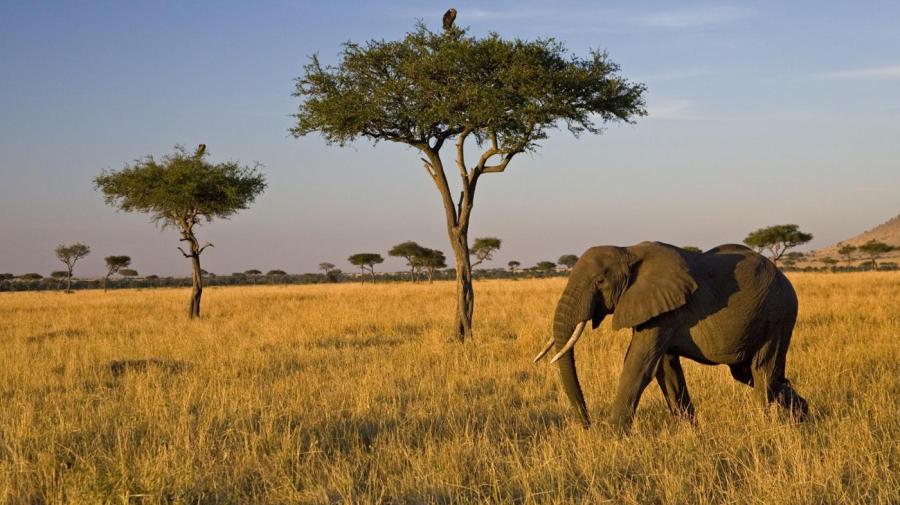What Is the Food Chain in the Savanna?

Producers (plants) in the savanna food chain are mainly grasses and shrubs. The primary consumers (herbivores) include giraffes, zebras, elephants, gazelles, wildebeests and warthogs. The carnivores are leopards, lions and cheetahs, and the scavengers are vultures, termites and hyenas. The decomposers include mushrooms, insects and microorganisms.
The savanna, or African grassland, is a diverse food chain reliant on migration patterns that follow water and food sources. One direct food chain may go as follows: a zebra eats grass and then gets eaten by a lion, which is consumed by vultures and hyenas when it dies. Once the food chain gets to the decomposers, the food chain starts over again as insects and mushrooms help nourish plants. Insects also serve as food for some animals, such as aardvarks, birds and small lizards. A hyena is both a carnivore and a scavenger on the food chain.
The savanna biome is characterized by tall grasses and shrubs with few trees. A healthy ecosystem features a complete food chain with no gaps; herbivores eat producers, and then herbivores are eaten by carnivores. These carnivores are then consumed by scavengers and decomposers, which in turn give food back to producers. Each feeding level in the food chain is called a trophic level.





